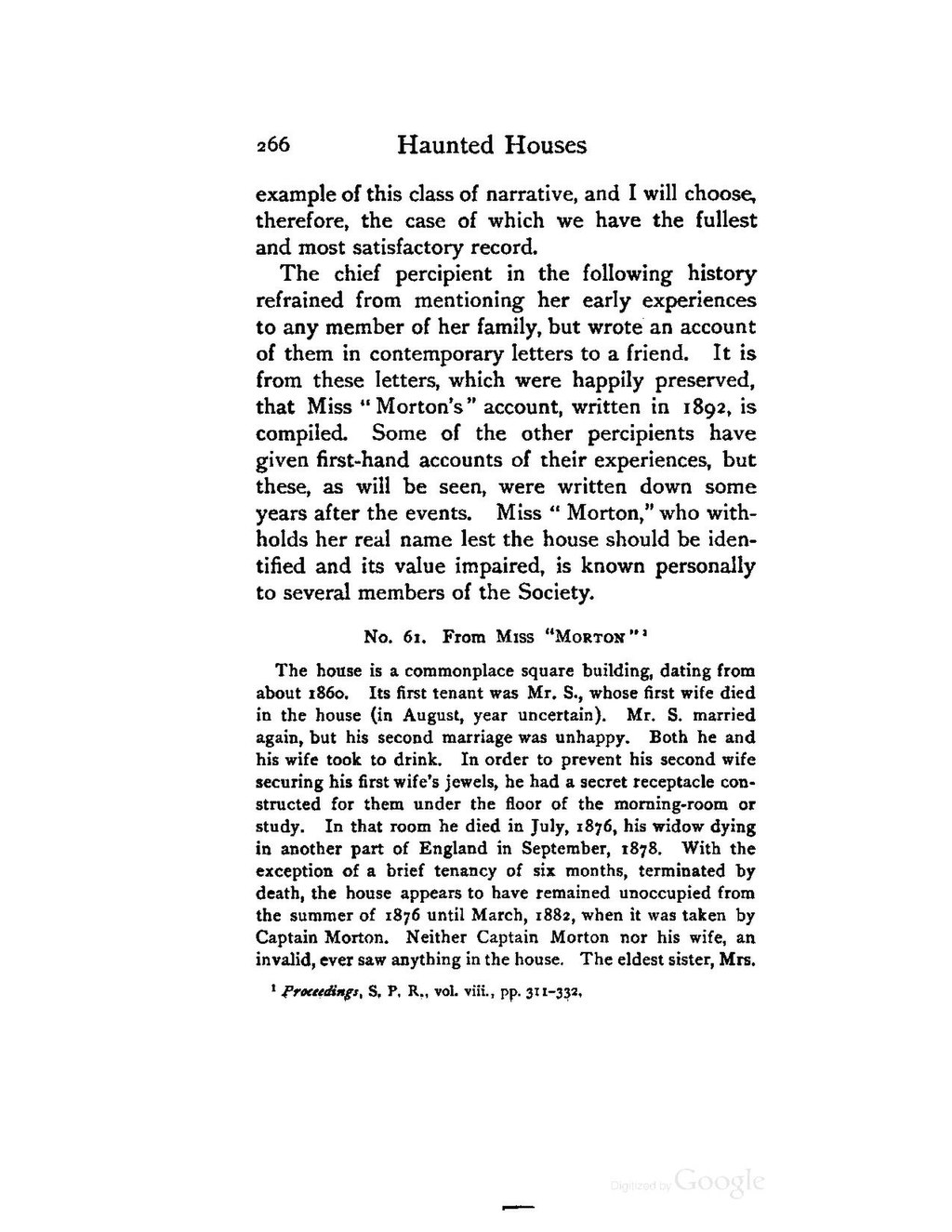example of this class of narrative, and I will choose, therefore, the case of which we have the fullest and most satisfactory record.
The chief percipient in the following history refrained from mentioning her early experiences to any member of her family, but wrote an account of them in contemporary letters to a friend. It is from these letters, which were happily preserved, that Miss "Morton's" account, written in 1892, is compiled. Some of the other percipients have given first-hand accounts of their experiences, but these, as will be seen, were written down some years after the events. Miss "Morton," who withholds her real name lest the house should be identified and its value impaired, is known personally to several members of the Society.
No. 61. From Miss "Morton"[1]
- ↑ Proceedings, S. P. R., vol. viii., pp. 311–332.

